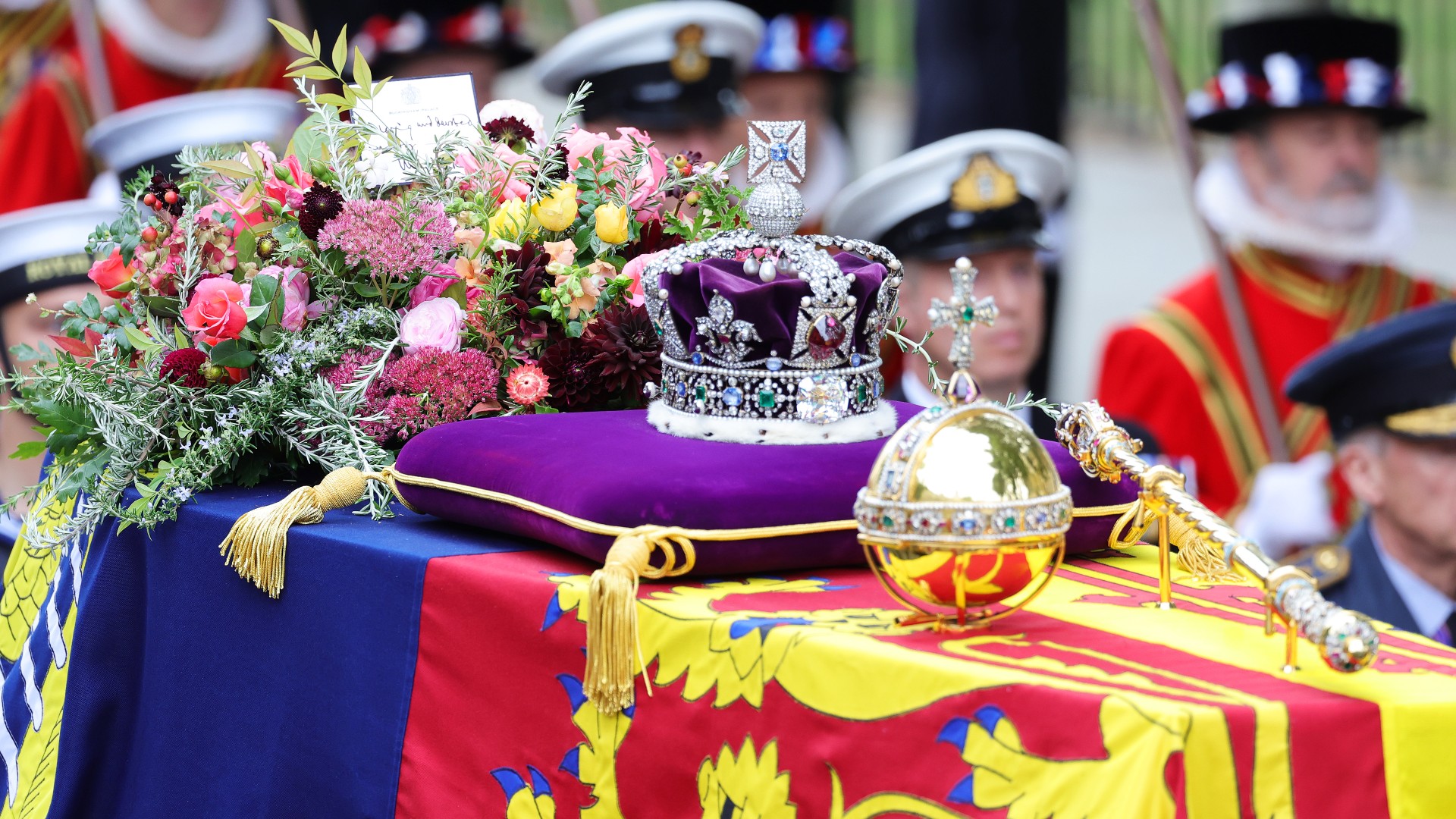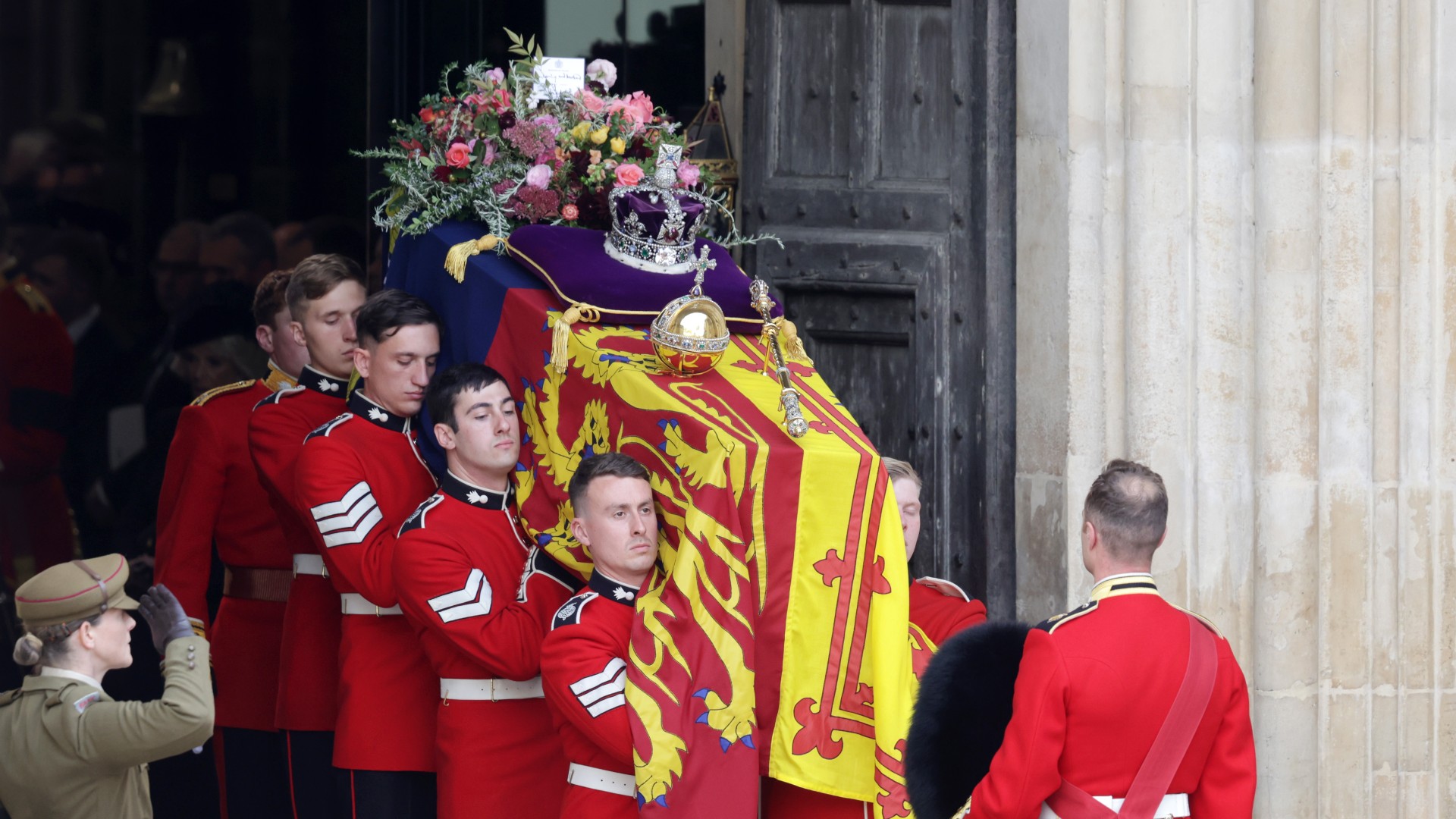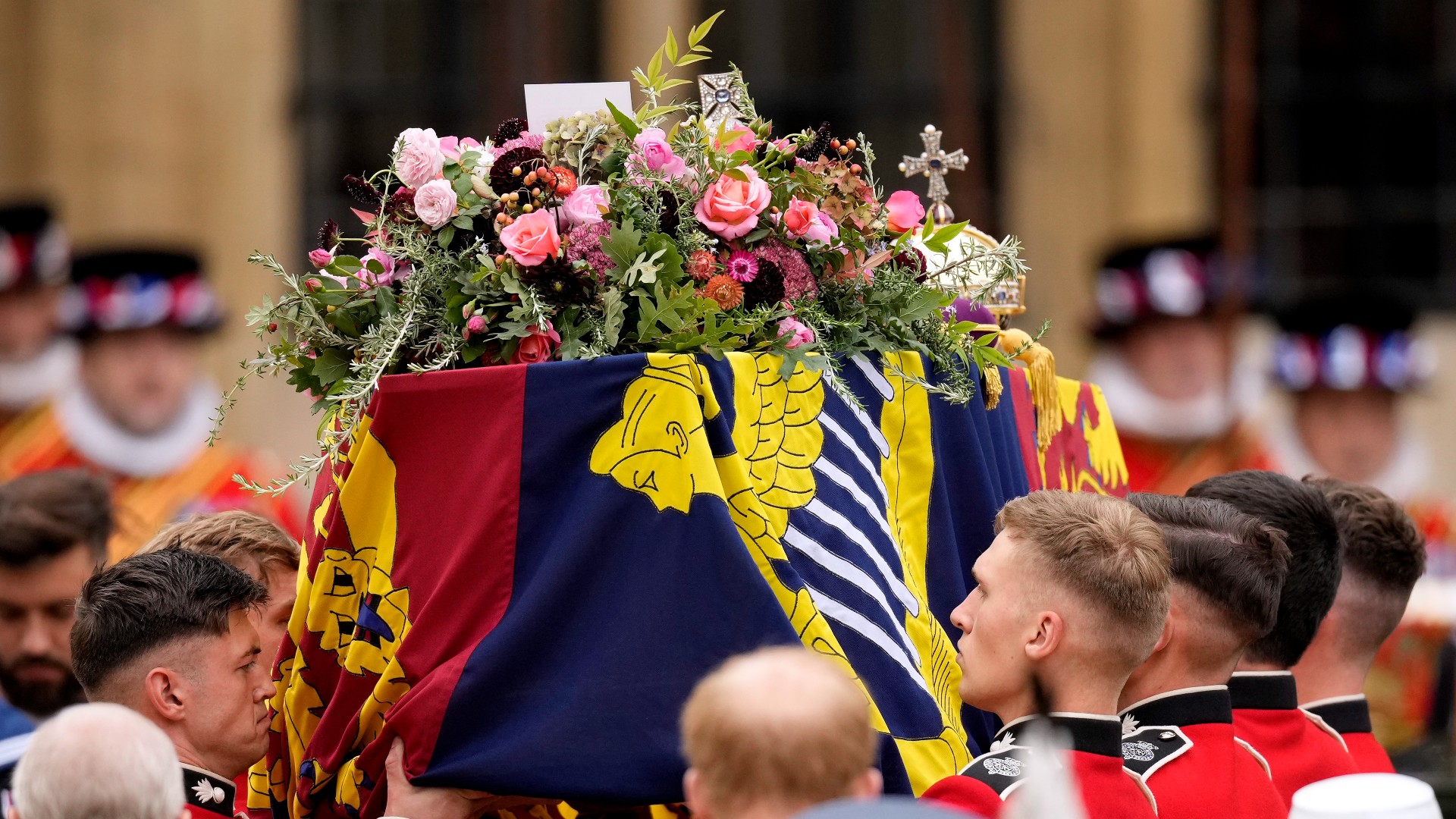The significance and sweet meaning behind the sustainable wreath of flowers on Queen Elizabeth II’s coffin at the State Funeral
Queen Elizabeth II's funeral wreath includes flowers with deep significance as well as a sweet nod to Prince Philip

Queen Elizabeth II is being laid to rest alongside her late husband Prince Philip, Duke of Edinburgh after a State Funeral filled with details of great personal and historical significance.
- Her Majesty, Queen Elizabeth II’s State Funeral is taking place on September 19.
- Upon her coffin is a wreath of beautiful red and pink flowers, cut from royal residences, as requested by King Charles.
- The choice of plants and flowers is seen as incredibly meaningful, with special traditions associated with each one.
On September 19, members of the Royal Family were joined by politicians, European royalty and leaders from across the world as they paid their respects to Britain’s longest-reigning monarch, Queen Elizabeth II, at her State Funeral service. Upon the Queen’s coffin was the Imperial State Crown, Sovereign’s Orb and Sceptre and a beautiful wreath of flowers.
As revealed by the Royal Family on the day of Her Majesty’s funeral, the flowers were by personal request of King Charles. The flowers on the Queen’s coffin contained rosemary, English oak, and myrtle, as well as flowers in pink, burgundy, and gold shades, with touches of white.

The myrtle in particular is hugely meaningful as it was cut from a plant grown from the myrtle that was included in Queen Elizabeth’s wedding bouquet when she married Prince Philip, the Duke of Edinburgh in November 1947. He was previously described by Her Majesty as her “strength and stay” so the decision to include myrtle with such a special origin is the sweetest nod to their love.
White myrtle has been the flower of choice for royal brides since the 1850s, with English Heritage having explained it was first used at the wedding of Queen Victoria and Prince Albert’s eldest daughter, Princess Victoria. Since then, flowers grown from the same plant have been featured in the bouquets of several generations of brides.

The significance of the Queen’s funeral wreath continued with the choice of English oak, which is thought to symbolize the strength of love, and rosemary, which is a traditional symbol of remembrance. Also included in the symbolic wreath are scented pelargoniums, garden roses, autumnal hydrangea, sedum, dahlias, and scabious.
All blooms and foliage have been cut from the gardens of Royal Residences. According to The Independent, these residences were Clarence House, the London residence of the King when he was Prince of Wales, as well as Buckingham Palace, the Queen’s official London residence, and Highgrove House in Gloucestershire.
Sign up to our free daily email for the latest royal and entertainment news, interesting opinion, expert advice on styling and beauty trends, and no-nonsense guides to the health and wellness questions you want answered.

Highgrove is King Charles’ countryside home and its gardens hold a special place in his heart having spent many years working on them with a focus on sustainability, from using natural fertilizers to having solar panels. The choice to include flowers from Highgrove, alongside those from his former home and the Queen’s official residence is a touching tribute.
The pretty wreath, in a nest of English moss and oak branches, is also understood to have been made completely sustainably, on the request of King Charles III.
On top of the wreath sits a white card that simply reads, “In loving and devoted memory. Charles R”.

Anna is an editor and journalist with over a decade of experience in digital content production, ranging from working in busy newsrooms and advertising agencies to fashion houses and luxury drinks brands. Now a freelance writer and editor, Anna covers everything lifestyle, from fashion and skincare to mental health and the best cocktails (and where to drink them).
Originally from Glasgow, Anna has lived in Berlin, Barcelona, and London, with stints in Guernsey and Athens. Her love of travel influences her work, whether she’s stocking up on the best skincare at French pharmacies, taking notes on local street style, or learning to cook regional cuisines. A certified cinephile, when she's not travelling the world, you'll find her hiding away from it at her local cinema.

